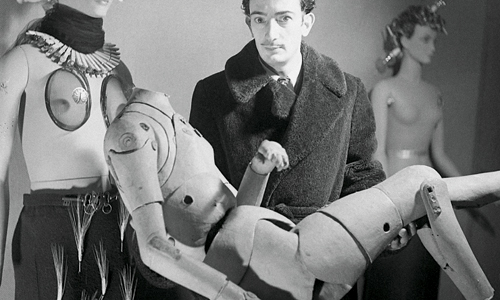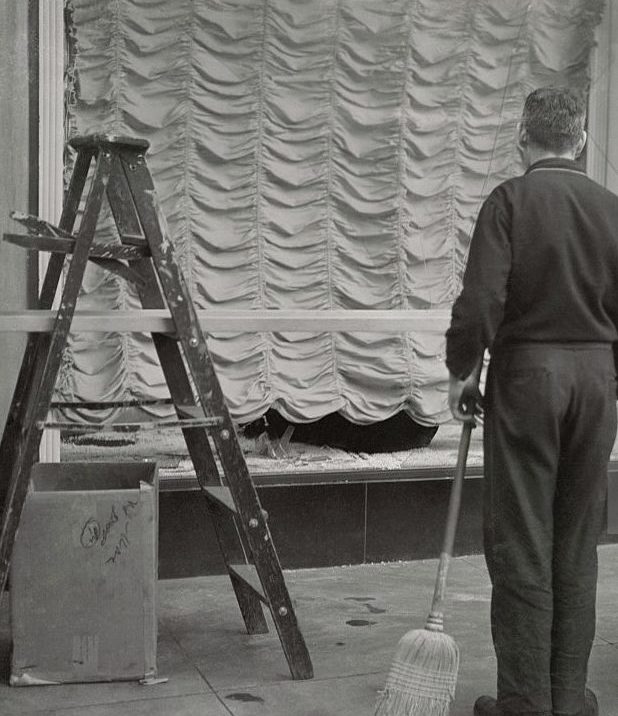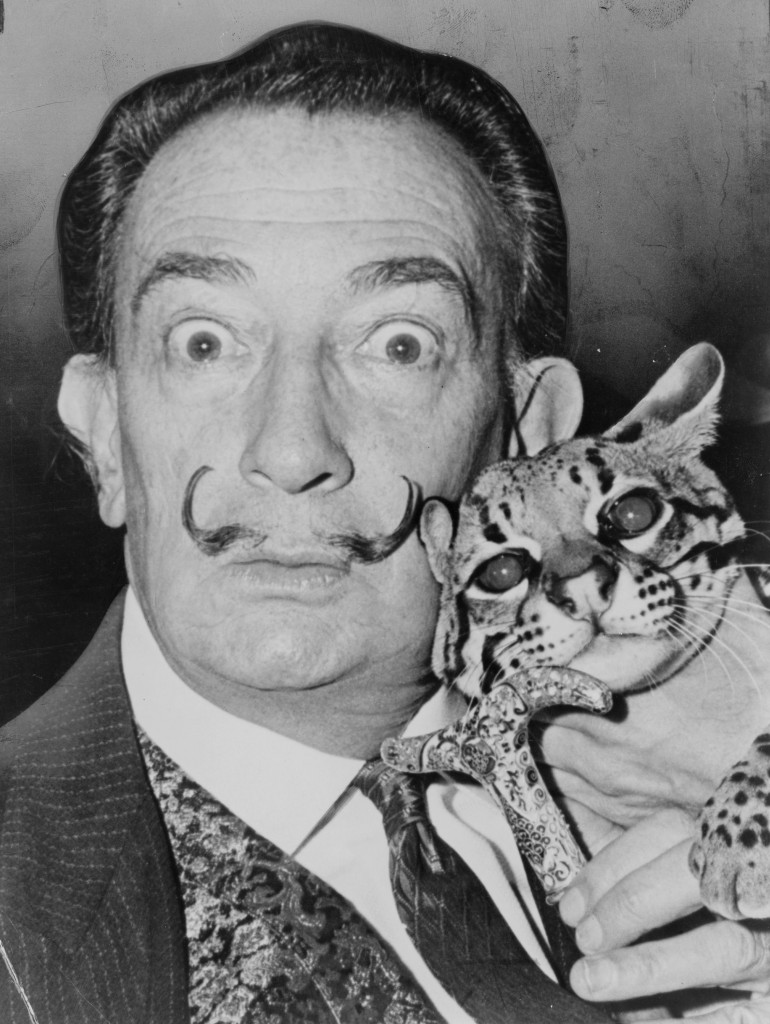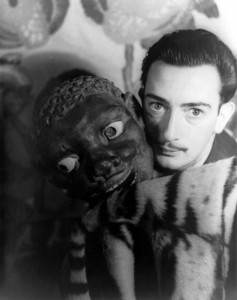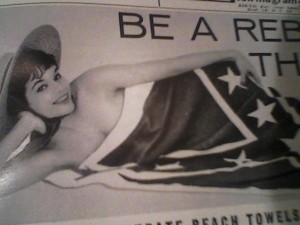From the March 19, 1939 Brooklyn Daily Eagle:
You are currently browsing articles tagged Salvador Dali.
Tags: Salvador Dali
In 1973, Russell Harty spent a weekend at Salvador Dali’s Catalonian home to create an appropriately insane portrait of the 69-year-old artist and his “cybernetic mind.” On display: Al Capone’s Cadillac, General Franco’s granddaughter and an “instantaneous plastic web.” Dali reveals that his two favorite animals are the rhinoceros and a filet of sole. Amazing stuff.
Tags: Russell Harty, Salvador Dali
Tags: Merv Griffin, Salvador Dali
LeRoy Neiman, a fashion-world illustrator who eventually made wealth and fame from loud, distinctive depictions of prizefighters and placekickers, just passed away. From “Leroy Neiman’s Work Reveals Him, In Some Ways, As A Carbon-paper Dali,” Pat Jordan’s largely dismissive 1975 Sports Illustrated profile of the man and his mustache:
“Neiman began his art career in sewing rooms, as a fashion illustrator for designers like Yves St. Laurent. His work appeared in Vogue, Harper’s Bazaar and Bride’s Magazine. Over the years, through persistence and the cultivation of a highly distinctive style—he is known as ‘a flamboyant colorist’—he became a personality as gaudy as those he portrays. In fact, at a poor showing of the New York Jets one Sunday in Shea Stadium, fans began to yell, ‘Put LeRoy in!’ Often, Neiman’s mere presence at an event overshadows it and the work he produces there. Such status now brings him as much as $25,000 for a painting. He is best known for his sporting canvases and lithographs.
‘LeRoy has style,’ said a publisher of coffee-table books-while sipping a drink at 21. ‘He discovered it 10 years ago and it’s made him a lot of money. He’s a very wealthy man you know, extremely. He has some beautiful suits. Still, I don’t think he’s put his soul into a painting in 10 years.’
At 44, Neiman has a lion’s mane of lustrous black hair, a surprisingly wispy, up-curled mustache and pale, puffy good looks. Perpetually clamped between his teeth or propped between his fingers is a long, thin cigar the length of an artist’s paintbrush. Maddeningly, the cigar never seems to diminish. Like plastic firewood, it appears to be an electronic prop that never sheds an ash.
Neiman’s friend and mentor, Salvador Dali, is also a believer in image-making props and elaborate mustaches, and, like Dali, Neiman has been accused by critics of expending more energy on the creation of his public character than on his art.”
Tags: LeRoy Neiman, Pat Jordan, Salvador Dali
Yes, that sounds accurate. From 1966.
Tags: Salvador Dali
The full 1970 documentary, “Soft Self-Portrait of Salvador Dali.” Just during the opening scene: insane piano solo, screeching cats, Orson Welles on narration. Tremendous stuff.
Tags: Orson Welles, Salvador Dali
After briefly making love to a pack of Parliaments, Mike Wallace interviews Salvador Dali, 1958.
Tags: Mike Wallace, Salvador Dali
For the relief of stomach pains and such.
Tags: Salvador Dali
Baseball pitcher Whitey Ford and timepiece melter Salvador Dali shill for Braniff during the 1970s.
Tags: Salvador Dali, Whitey Ford
Elizabeth Lowry of the Wall Street Journal has a fun article about Jessica Kerwin Jenkins’ Encyclopedia of the Exquisite, a new book that seems right up the alley of language-loving, factoid-obsessed Afflictor readers. It’s an idiosyncratic reference book in which Jenkins, a writer for Vogue, offers histories on milk baths, the word “hello,” and cloud names, among other topics. An excerpt about what Lowry considers the book’s most offbeat entry:
“The most outré entry of all, however, is the one on things ‘subaquatic,’ which includes a delirious description of Salvador Dalí’s deranged installation at the New York World’s Fair in 1939. Dalí’s underwater artwork, called the Dream of Venus, was a ‘panorama of the unconscious,’ the artist explained. Inside a grotto, visitors found a topless actress lying on a vast bed of red satin strewn with lobsters and champagne bottles. Behind her in a giant aquarium, glimpsed through a window, naked women posing as mermaids with rubber tail fins, the artist’s ‘living liquid ladies,’ played a woman-shaped piano and tapped away at floating rubber typewriters.
Time magazine dubbed the performers ‘Lady Godivers.’ When World’s Fair officials insisted that Dalí get rid of an image advertising the performance—a reworking of Botticelli’s Venus with a fish-head torso—he retaliated by hiring a plane and pelting the city with copies of a manifesto called the ‘Declaration of the Independence of the Imagination and the Rights of Man to His Own Madness.’ It is a man’s right, he wrote, ‘to love women with ecstatic fish heads.'”
Tags: Elizabeth Lowry, Jessica Kerwin Jenkins, Salvador Dali
This very non-PC advertisement for Confederate Beach Towels can be seen in the July 1960 issue of Esquire. An appropriate covering for the Jesse Helms Sand Castle Tournament, this wrap cost $4.95. The copy promises: “You don’t have to risk Yankee gunfire to cover yourself with glory on this quality 6′ by 3′ Cannon beach towel with the stars and bars ingrained in blazing red, white and blue.”
Printed on large Life-size paper, this 152-page issue was a special edition that focused exclusively on New York City. Despite a formidable roster on contributors (James Baldwin, Truman Capote, Salvador Dali, etc.), it’s not a particularly inspired issue. Publisher Arnold Gingrich had yet to appoint Harold Hayes as Editor-in-Chief. (Both Hayes and legendary New York magazine founder Clay Felker were already on the masthead.) After Hayes ascension to the top post, he would team with designer George Lois to make Esquire during the ’60s arguably the best American magazine in the history of the business.
Tags: Arnold Gingrich, Clay Felker, Confederate Flag, Esquire, Harold Hayes, james Baldwin, Jesse Helms, Salvador Dali, Truman Capote

